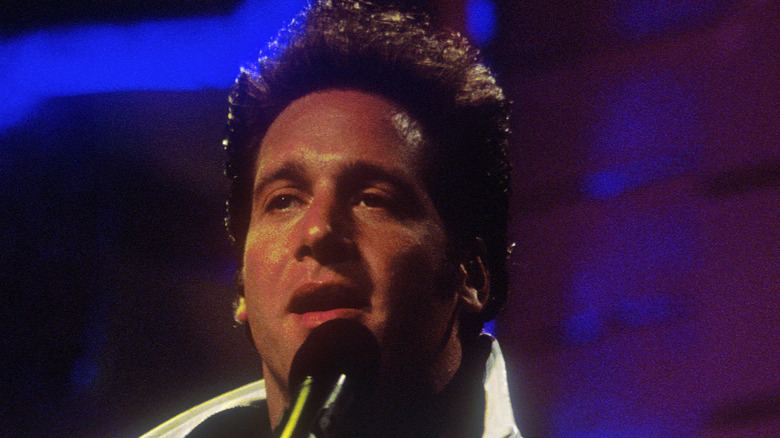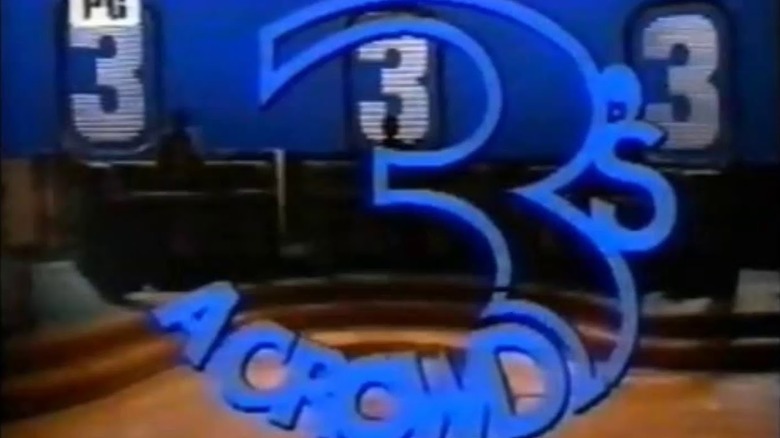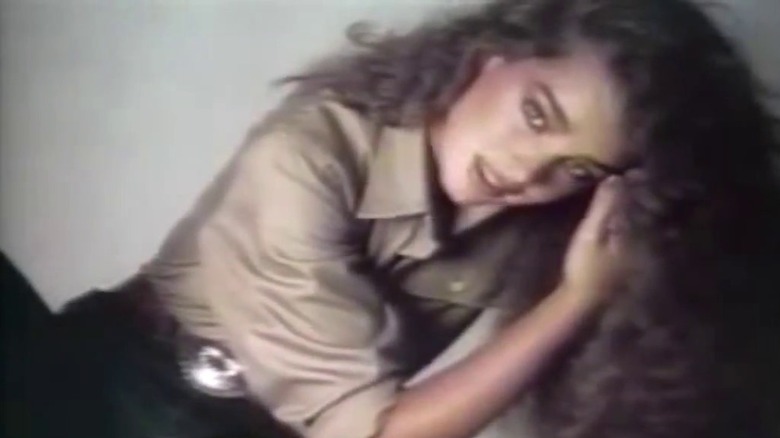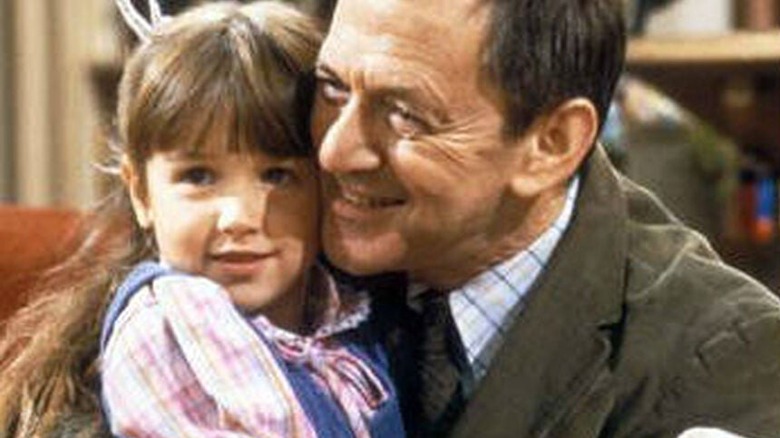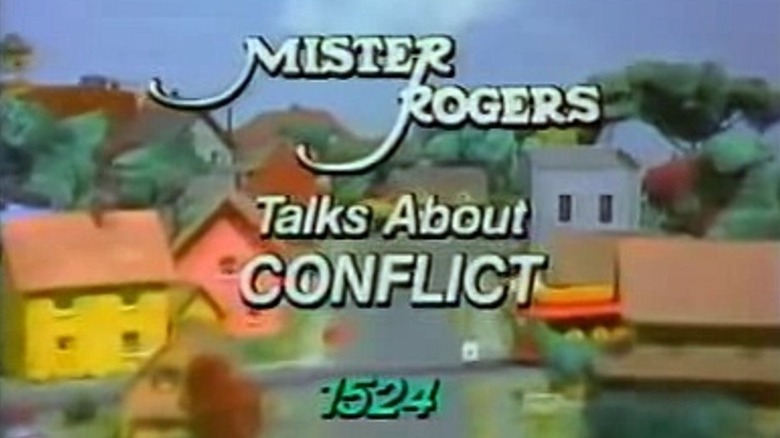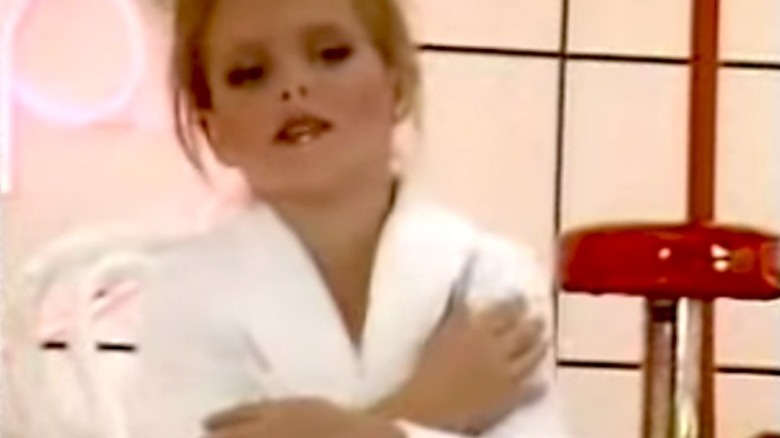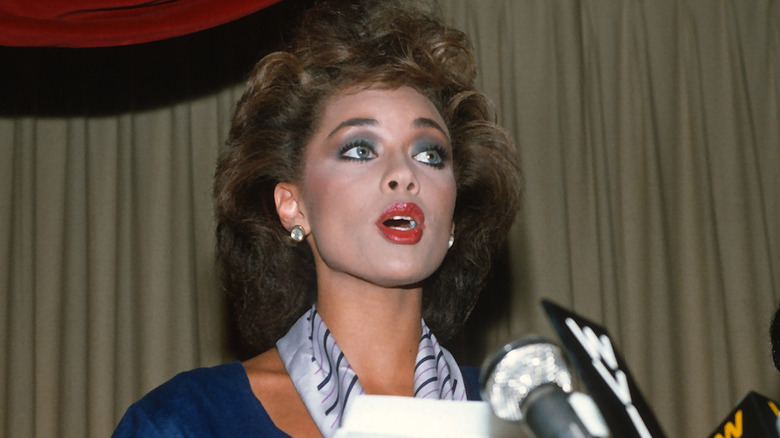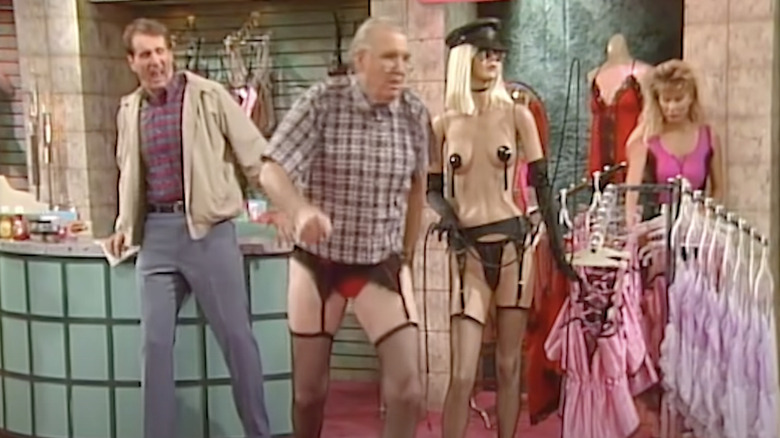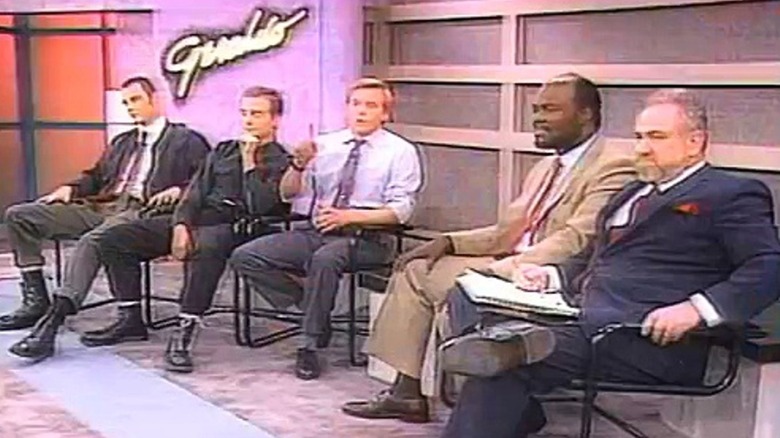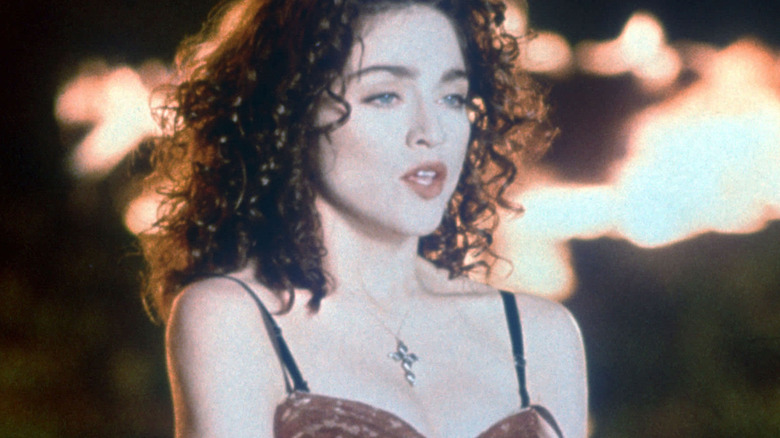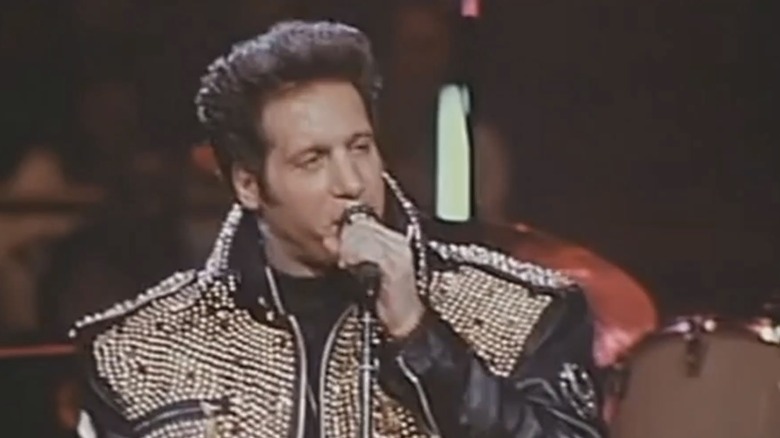Times '80s TV Shows Outraged Fans
The 1980s were a time of excess and contradiction. Conservative politics and laissez faire capitalism were on the rise, leading to moral panics as well as keeping up with the Joneses-style consumerism. The Cold War between the United States and the Soviet Union had school kids hiding under their desks. Meanwhile, fashion and pop culture were as neon bright and in-your-face as ever before. All of this was reflected in the television programs that the general public enjoyed.
Earlier in the century, in the years of the "Big Three" networks of ABC, NBC and CBS, programming was targeted to the broadest possible swath of the population. As the '70s gave way to the '80s, a plethora of new cable TV channels like MTV and VHI joined recent additions to TV lineups such as Showtime and Nickelodeon. That meant viewers suddenly had many more choices, but it also meant programming became more niche. The youngest TV fans could wake up and watch "Good Morning Mickey" on the Disney Channel when Walt's network went live in 1983. Horror-loving adults could stay up late to catch "Tales from the Crypt," hosted by a snarky corpse, on HBO.
All this onscreen variety was largely a positive development. From "Miami Vice" to "Cheers" to "The Oprah Winfrey Show," some truly influential TV sprung from the 1980s. However, because not everything was for everybody, viewers often found themselves upset or offended by what they saw once they started flipping between channels. Sometimes the controversy came and went. Sometimes the backlash was intense enough that episodes were pulled or series were canceled altogether. These are the TV moments that caused outrage in the '80s when — at least in the minds of some — they crossed the line of decency and good taste.
3's a Crowd causes divorces
Game shows have been popular since the 1950s, but they became even more popular in the 1970s with the premieres of what would go on to become long-running series like "Jeopardy!," "Wheel of Fortune," "Family Feud," and "The Price Is Right." The 1980s had some kitschy hits with programs like "Press Your Luck" and "American Gladiators," but on the whole, there were more bizarre failures than successes.
One of the most notorious of these was "3's a Crowd." Produced by Chuck Barris (the man behind "The Gong Show" and "The Newlywed Game"), this ill-advised concept was a riff on the latter. Instead of testing how well a new bride and groom really knew each other, "3's a Crowd" tested whether a man's wife or his secretary knew him better.
In his 2004 book "What Were They Thinking?: The 100 Dumbest Events in Television History," David Hofstede reports that the series — which only ran for 13 episodes and caused 12 divorces — was like watching marriages dissolve in real time. "3's a Crowd" drew heavy criticism for its sexist premise and allusions to adultery, and it was boycotted by the United Auto Workers as well as the National Organization for Women. It was canceled in February of 1980 and effectively marked the end of Chuck Barris' storied career.
Angry viewers come between Brooke Shields and her Calvins
In 1980, Brooke Shields was a model and movie star who — at only 15 years of age — was no stranger to controversy. Shields had starred in R-rated movies including 1978's "Pretty Baby," in which she plays a tween sex worker, and 1980's "Blue Lagoon," a film that depicts a 14-year-old girl engaged in sexual activity with her 19-year-old cousin while marooned on an island. But it was her stint as a Calvin Klein model that caused an infamous public outcry.
Calvin Klein ran a series of print and television ads that toyed with Shields' public persona as a "good girl" who had starred in some very racy movies, with ad copy that was full of obvious innuendo. One version uses "jeans" as a play on the word "gene" and has Shields explain how mating is essential for the survival of the fittest. However, the ad spot that really stirred the pot is the one in which Shields asks the home audience, "Do you want to know what comes between me and my Calvins?" before replying "Nothing."
Many viewers felt it was wrong to style Shields as more mature than she was; they felt the ad unnecessarily sexualized the teenager just to sell some pants. Enough people agreed that the commercial was eventually banned from airing on ABC and CBS, though Klein himself refused to denounce the ad, saying "Jeans are sex. The tighter they are, the better they sell."
Love, Sidney's gay protagonist offends the so-called 'Moral Majority'
Today's audiences tend to remember a few major milestones in LGBTQ+ representation on TV, especially Ellen's coming out moment and the 1998 debut of "Will & Grace." Until the late 1990s, queer characters were largely deployed as comic relief or cautionary tales. But in 1981, a short-lived series called "Love, Sidney" dared to become the first sitcom ever to revolve around a gay man (albeit a fairly closeted one).
"Love, Sidney" was a continuation of the TV movie "Sidney Shorr, A Girl's Best Friend" that aired on NBC and starred Tony Randall and Swoozie Kurtz. In the show, Randall's Sidney lives with Kurtz's single mother Laurie Morgan and her young daughter Patti, and the three form a happy non-traditional family. Sidney is a well-to-do working illustrator with a swanky apartment, and is treated with much more dignity than was typical for gay characters at the time.
Though the show was generally well received by critics, its premise caught the attention of the Moral Majority, the conservative political action committee founded by Jerry Falwell. They objected to what they deemed a "positive portrayal of homosexuality" and threatened to bombard "Love, Sidney" with complaint letters in hopes of getting it taken off the air. The show's creators did tone down the explicitness with which Sidney's sexuality was discussed and depicted, but in the end, despite the Moral Majority's performative public response, only four complaint letters were actually received, according to the show's star.
Mister Rogers' Cold War episodes cause 'conflict'
Fred Rogers is one of the most comforting presences ever to grace a television screen. In his children's series, which ran from 1968 to 2001, Rogers and his human and puppet friends helped kids understand and process everything from racism to divorce and the assassination of President John F. Kennedy. Rogers was practically universally beloved, but some viewers — and his own network — had strong feelings about a five-episode arc in 1983 entitled "Mister Rogers Talks About Conflict."
At the time, the Cold War between the United States and the USSR was a fixture in the headlines. Rogers decided to play out the situation as an allegory with the residents of his puppet kingdom, the Neighborhood of Make-Believe. King Friday believes that Cornflake S. Pecially, ruler of nearby Southwood, is building a bomb and that he could lay waste to his kingdom at any time. He arms himself with explosives in response.
Throughout the episodes, kids are taught about the real Cold War, told how to use gas masks and seek shelter and otherwise prepare — practically and emotionally — for actual military conflict. Thankfully, the storyline resolves without any loss of life. Lady Elaine and Lady Aberlin never buy into the hysteria and go to Southwood to investigate, where they discover that Corny is building a bridge, not a bomb.
The plot was a misunderstanding meant to illustrate the dangerous effects of political paranoia on a global scale. Rogers' intentions were admirable, as always, but after the weeklong arc aired, PBS feared that the episodes were both too scary and too political, and the network pulled them from syndication. Some clips from "Mister Rogers Talks About Conflict" have reappeared on YouTube in recent years.
Minipops' disturbing treatment of its child stars draws ire
Variety shows are another persistent television mainstay, with shows like "So You Think You Can Dance" and "The Masked Singer" still performing well in prime time. In the 1980s, "American Bandstand" was still swinging, and new entries like "Dance Party USA" and "Showtime at the Apollo" were finding their groove. But one extremely poorly conceived variety show from the other side of the pond stepped way out of line (even as it managed to draw millions of viewers).
"Minipops" was a half-hour musical show from Britain's Channel 4 that featured a rotating cast of children as young as six years old copying the vocals and dance moves of the Top 40 hits of the day. They faithfully recreated tracks such as "Kids in America" and "Eye of the Tiger" but also less appropriate tracks such as "Satisfaction" and "Don't You Want Me." In theory, "Minipops" doesn't sound far removed from something like "Kidz Bop," but in practice, "Minipops" was extraordinarily creepy. The child actors were styled like their adult counterparts. In some cases, they wore makeup and stilettos. They mimicked suggestive choreography and facial expressions, and unlike "Kidz Bop," the explicit lyrics weren't swapped out for kid-friendly alternatives. In one episode, a very young girl wearing nothing but a bathrobe and red lipstick croons, "Nighttime is the right time, we make love."
Though "Minipops" didn't have a problem finding an audience, the reaction to the series was so outrageous that it was canceled after six episodes. The Minipops stayed in the spotlight awhile after the controversy, though: The group kept releasing albums into the late '80s, and Tracey Ullman parodied the show in her own act.
Vanessa Williams is crowned Miss America ... then resigns
Beauty pageants have fallen out of fashion in recent years, but they were all the rage from the mid-1800s through the 1990s. For most of its history, the pageant circuit was dominated by white women. In fact, "Rule Seven" of Miss America's bylaws dictated that participants must "be of good health and of the white race" until the 1950s. Even then, a Black contestant didn't make it onto the national stage until 1970 — so when Vanessa Williams won the Miss America pageant in 1983, she made history.
Her victory was seen as proof of progress, both in the wider culture and in the cosmetic industry, but it would come to be marred by scandal. She's since gone on to a long career in the entertainment industry, but for years, Williams was most well-known for resigning her title after nude photos of her were published in Penthouse Magazine without her consent. What's less well known is that Williams faced an intense and immediate public backlash after the broadcast aired and long before the photos in question were leaked, solely because of her skin color.
Williams was victim to angry racist comments and even death threats. The situation was dangerous enough that sharpshooters were sent to her hometown parade. But according to the actor and singer, what hurt more was the criticism she received from some in the Black community who claimed she only broke through racial barriers because of her light skin and green eyes. It's possible that the racial animus and elevated scrutiny that followed her win contributed to the release of the pictures, for which Penthouse paid a record amount (the public's fascination over her downfall made it the magazine's bestselling issue).
Married... with Children is boycotted ... and becomes more popular
When Fox hit the airwaves in 1987, the upstart network saw itself as a challenger to the established Big Three. Instead of copycatting, FOX's strategy was to provide counter-programming. FOX's slate was purposefully cheeky and subversive, and no show was cheekier or more subversive than "Married... with Children." Most family sitcoms of that era — "Growing Pains," "Family Ties," "Full House" — depicted affluent, close-to-perfect families as the norm. The Bundys, on the other hand, were crass, working-class and more relatable to many Americans.
Nearly every episode offended the sensibilities of conservative groups, who objected to the show's lascivious subject matter. Liberals raised an eyebrow at the way women were objectified. Still, advertisers weren't swayed until a particular installment triggered a boycott. In "Her Cups Runneth Over," Al Bundy and his cohorts visit a lingerie store, and — in addition to featuring BDSM and bigoted cracks about homosexuality and crossdressing — the episode includes one-liners about and instances of women being groped.
A woman named Terry Rakolta organized a petition in response to "Her Cups Runneth Over," which she deemed "soft-core pornography." She persuaded some companies to pull their advertisements, and the show decided not to air a subsequent episode about Al and Peggy Bundy's sex tape out of caution. Rakolta may have won the battle, but she lost the war. The dustup thrust the new network's marquee show into the spotlight, and "Married... with Children" became more popular in the end.
Violence breaks out on and off the set of Geraldo
Talk shows are about as old as television itself. They're one of the mediums that easily made the transition from radio to screen, and they only grew in popularity as the number of channels multiplied because they're so cheap to produce. The 1980s may have been a high point for sheer quantity, with hosts like Oprah Winfrey, Sally Jessy Raphael, and Phil Donahue engaging the nation in daily conversation, but the '80s certainly weren't a high point in terms of quality or civility. "Geraldo" is exhibit A.
Geraldo Rivera took his cues from predecessors like Morton Downey Jr., who used his program to give extremists a platform and exacerbate the nation's anger and frustration in hopes of inciting the kind of sensational conflict that would drive up ratings. One episode of "Geraldo" — purportedly about "exposing hatemongers" — gathered together white supremacists, Black civil rights activists, and Jewish community leaders on stage and in the audience. When the skinheads (predictably) began making incendiary comments, an all-out brawl ensued. Rivera himself joined in the melee and got his nose broken by a chair on live TV in the process.
The scene was ugly and, despite Rivera's claims that he was merely trying to shine light on hate, it didn't add anything of value to America's conversation about race relations. As unfortunate as that incident was, things got worse for "Geraldo." Around the same time, 19-year-old Jonathan Cantero killed his mother and claimed he conceived of the idea after having watched an episode of "Geraldo" devoted to Satanism. The phenomenon known as "the Satanic Panic" was in full swing, which was surely why Rivera chose it as a topic. Cantero's subsequent crime only fed into the national hysteria.
Madonna's 'Like a Prayer' video offends Pepsi drinkers
Of all the personalities who made it big during the '80s, arguably none defined the decade so precisely as Madonna. The "Queen of Pop" set trends in music, dance, beauty, and fashion, and pushed the boundaries as to what was acceptable to say and do in the public sphere. It's no wonder that Pepsi paid the Material Girl $5 million to star in their 1989 ad campaign.
Madonna largely got away with her carefully calculated provocations. But 1989 was also the year her much-anticipated album "Like a Prayer" dropped. The accompanying music video for the title track, which combined sacred and profane imagery, quickly became a topic of heated debate. In the short film, which partially takes place within a church sanctuary, Madonna wears a crucifix around her neck, engages in physical intimacy with a Black man that some interpret as a Jesus-like figure, and experiences stigmata. The Black man saves Madonna from an attempted assault, but the police arrive moments later and arrest her savior. Crosses burn in the background.
Religious groups like the American Family Association and the Catholic Church protested, and sensing discomfort among the general public, Pepsi also lobbied MTV to take the video off the air. But the network didn't waver and capitalized on the uproar by proudly proclaiming "Like a Prayer" was their "most controversial video ever." Ultimately, the soda maker decided to withdraw their Madonna ad. It only aired twice, and the pop star kept her $5 million paycheck.
Andrew Dice Clay gets himself banned from MTV
Music videos had their heyday in the '80s and '90s, and so did the award show that honored them, MTV's Video Music Awards. The ceremony, which began in 1984 and continues to this day, was always considerably edgier than the Oscars and Emmys and sometimes even wilder than the Grammys. It all made for some outrageous, early viral moments, one of the most legendary of which was comedian Andrew Dice Clay's 1989 appearance.
"The Diceman" — whose entire persona was raunchy and confrontational — was tasked with introducing Cher. He was given some pre-written jokes to perform, but he went off script and recited his naughty nursery rhymes and some other off-color one-liners instead. The material wouldn't come off as particularly incendiary by modern standards. Likely, MTV executives were upset that he went rogue and braced for a fallout. He was banned from the network after the incident (though the ban was lifted in 2011).
